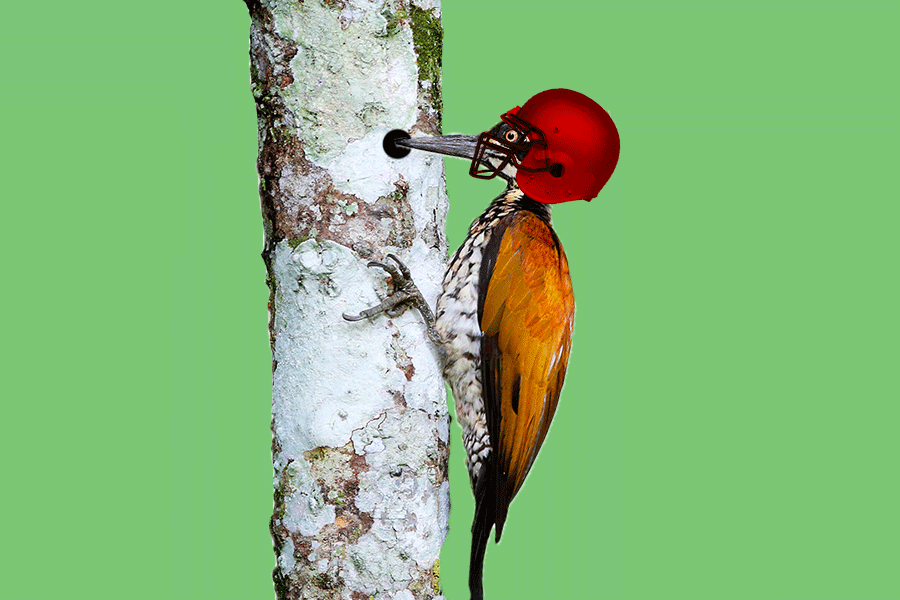In his old column at SBNation, popular sportswriter and podcaster PFT Commenter wrote the following in his review of the 2015 Will Smith film Concussion:
As far as the timeline and events of the film go, there are a few glaring plot holes and inconsistenceys- namely the fact that the movie not one time mentions the medically proven fact that woodpeckers and big-horn rams arent falling out of the sky with CTE depsite that they spend 40% of there waking hours slamming their heads against each other.
For those unfamiliar, the misspellings and grammatical errors are intentional. PFT Commenter is something of an internet performance artist, posing as an over-the-top sports fan and amateur conspiracy theorist. His error-filled takes are meant to satirize sports culture and misinformation on the internet, and nothing epitomizes that better than using woodpeckers to debate football’s concussion crisis.
It seems ludicrous, but you’d be amazed at the number of diehard football fans who look to the woodpecker as a model for making football safer. The humble woodpecker — once a symbol for frustration and/or the virtue of hard work, and best memorialized by the lovable, anthropomorphized scamp Woody — has emerged over the last few years as something of a meme in the ongoing debate over brain trauma in football.
As PFT Commenter mentions above, the idea is that if concussions cause long-term brain damage, then why don’t woodpeckers, animals that spend their entire lives ramming their heads against the sides of trees, have brain damage?
Yeah, that’s what I thought.
While clearly a goof in most cases, there are some people who seem to think the woodpecker, anti-concussion argument is valid.
How can a woodpecker slam his head against a tree that much without giving himself a concussion?
— AZ (@AZwisdom) November 12, 2017
Thankfully, that argument has been largely put to rest by a new study from researchers at Boston University, the same institution leading the research into how football causes brain damage in humans. It shows that woodpeckers have large build-ups of tau protein in their brains — the same protein associated with dementia, Alzheimer’s and chronic traumatic encephalopathy, a rare, degenerative brain disease that’s shockingly common in former NFL players.
Before jumping to any conclusions about what this means for humans, please note that the researchers say that the excess tau proteins might actually be beneficial for woodpeckers. “There’s a possibility that the tau in woodpeckers is a protective adaptation and maybe not pathological at all,” says Boston University’s Peter Cummings, one the study’s authors.
Cummings’ comment highlights why it’s dumb to draw steadfast conclusions about humans from woodpeckers in the first place. They’re two entirely different species. The adult human brain weighs three pounds; a woodpecker’s weighs less than a tenth of an ounce. A woodpecker’s brain is located at the back of its skull, far away from where its beak makes contact with a tree. A human’s brain is not. A woodpecker has a muscle that wraps around its skull, stabilizing it during impact. A human does not. Woodpeckers are evolved to beat their heads in all day. Humans are not — despite what football players do for a living.
There are some helpful tips we can take from woodpeckers, though. Helmet manufacturers are studying woodpecker skulls in the hopes of designing a safer helmet. And in fact, earlier this year, star Carolina Panthers linebacker Luke Kuechly, who’s suffered concussions throughout his career, began wearing a device during games called a Q Collar that sends more blood to the brain, reducing the brain’s movement in the skull during a collision, just like a woodpecker.
Football fans have heralded the invention as a possible cure all for concussions. But that’s likely an impossibility — both for this particular piece of technology and writ large. After all, there’s no better proof of football’s inherent danger than looking to woodpeckers for inspiration.
